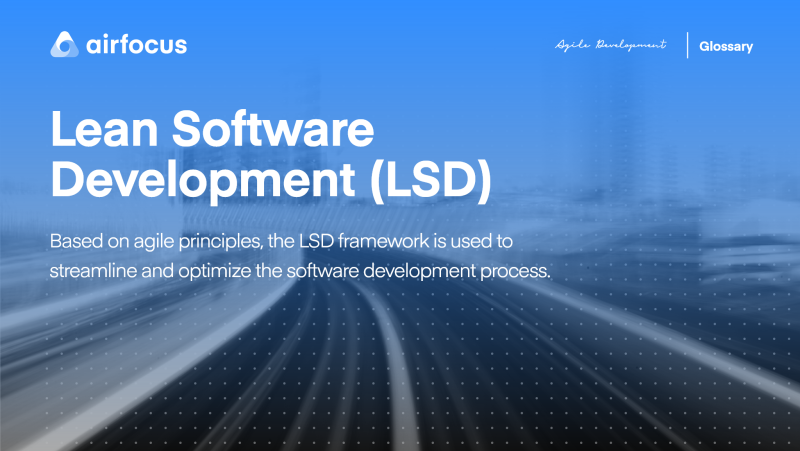Lean Software Development (LSD)
What is Lean Software Development (LSD)
Definition of Lean Software Development (LSD)
Based on agile principles, the LSD framework is used to streamline and optimize the software development process.
You may also hear of LSD referred to as the minimum viable product (MVP) strategy, as these two ways of working are very much aligned. Both intend to speed up development time, by focusing only on the necessary deliverables, and getting a product to market before adding new features.
Launching with only bare-minimum features gives teams the opportunity to learn from real market metrics, identify what works and doesn’t work for users, and then roll out new updates or redesigns based on this data.
Who created Lean Software Development?
Toyota has been credited with inspiring the lean development framework based on agile principles, so much so that when this process was first developed it was referred to as the Toyota Production System.
For the Japanese car manufacturer, a lean development approach meant optimizing production and assembly lines, to minimize wasted time and resources. For Toyota, any action that didn’t directly contribute to the build of a car was considered ‘waste’ and was stripped from the production process.
Seeing how Toyota’s lean approach was improving efficacy, time and cost management, and maximizing customer value, many other manufacturing teams — across a range of industries — started to follow suit.
LSD was first adopted in software development in 2003, the same year ‘Lean Software Development: An Agile Toolkit’ was published.
Advantages of using Lean Software Development
Today, LSD has been shown to improve software development in the following ways:
The development process becomes simplified and rational. LSD removes needless process stages when designing software, saving time and valuable resources as a result
Eliminating wasteful losses. As the focus is on the minimum viable product, LSD prioritizes essential functions and features above all else. Once an MVP is in the marketplace, teams can then learn which new features should take priority, based on real customer insight — this removes the risk of spending time or investment on needless builds.
Boost the involvement rate of your team. When understanding the values in lean development methodology, people are one of the most important keys. By increasing participation, the overall workflow becomes optimized, and losses get reduced or removed altogether.
Is Lean Software Development right for your team?
Before deciding on an LSD approach, teams should consider the pros and cons, or strengths and weaknesses.
For example, Lean Software Development offers many strengths:
Focusing on essential activities, to reduce unnecessary spend
Can get a product launch ready faster than other frameworks, thanks to LSD’s streamlined approach
Development teams become empowered during decision-making processes.
However, there are some drawbacks to consider. For LSD to work effectively:
Documentation is critical. Failure to thoroughly record and document the LSD process can lead to mistakes in the development process
Team involvement, buy-in, and understanding are vital for success — the entire team must be briefed and on board with the LSD approach. As a result, LSD can prove challenging to scale compared to other agile frameworks.
This being said, most organizations using Lean Software Development find that the pros outweigh the cons. In the majority of use cases, LSD enables the team to progress with confidence, streamlining the development progress and focusing on the most essential features to meet a user’s need.
It takes courage to cut or de-prioritize activities and features that go beyond the scope of a minimum viable product, but rest assured that if you’ve followed the LSD framework, you’ll soon have a chance to upgrade your MVP once it’s had a successful launch to market.

General FAQ

Glossary categories
Experience the new way of doing product management

Experience the new way of doing product management








